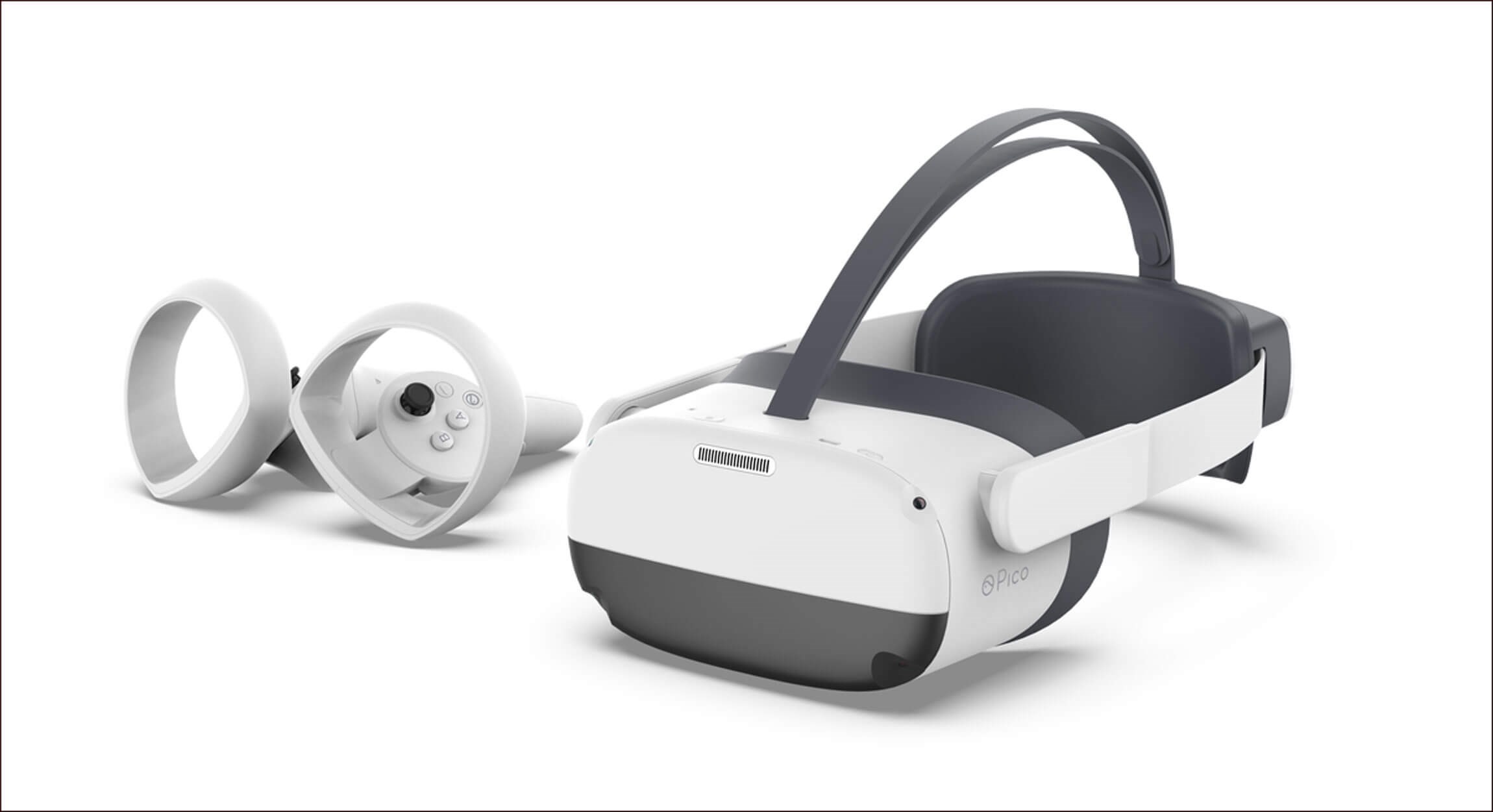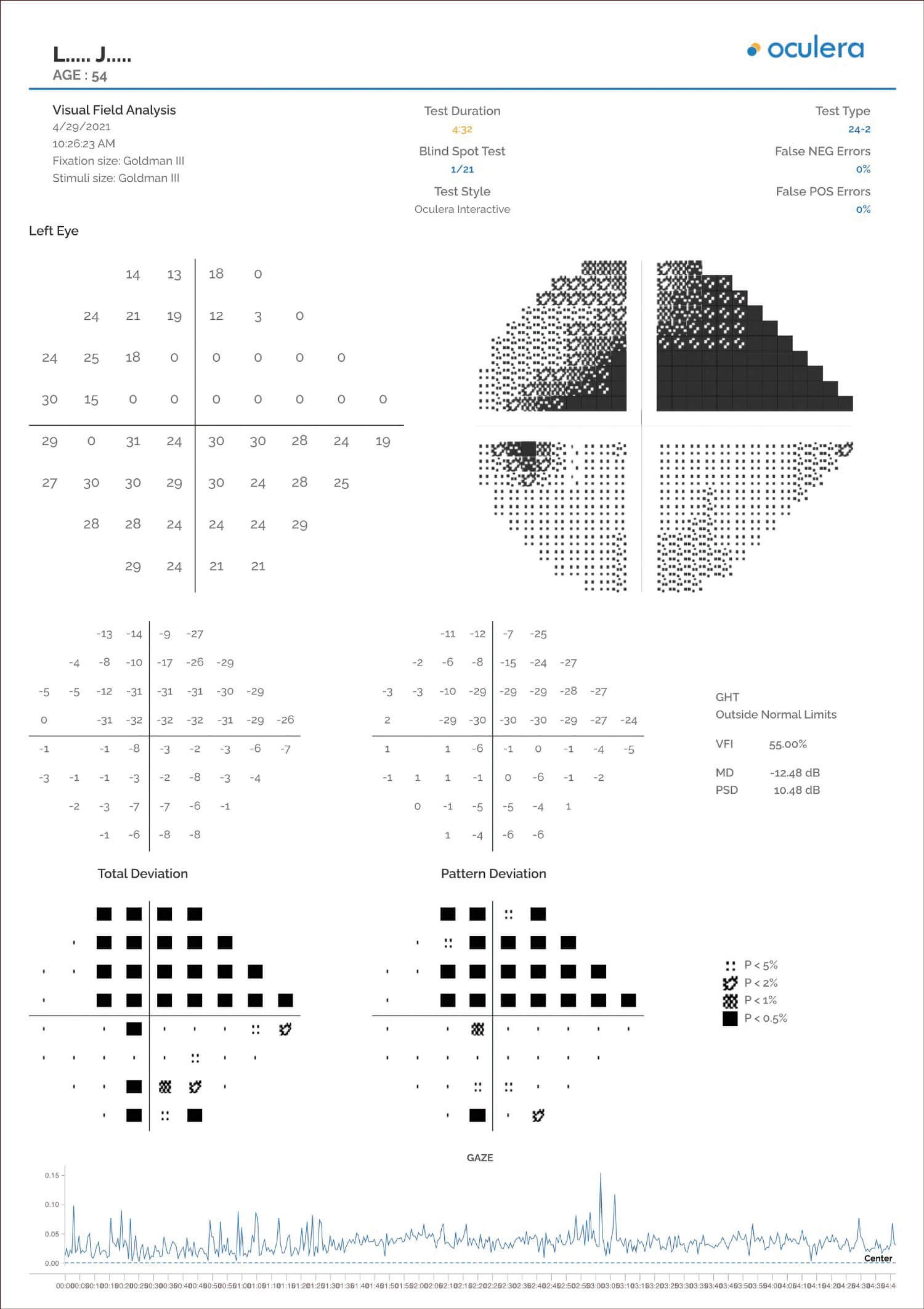Visual field analysers are traditionally large table mounted devices, designed specifically for field capture and analysis. Over the last year or so a number of companies have started to disrupt this space with the introduction of headset-based field analysers, mostly developed around existing virtual reality (VR) type headsets.
This approach to perimetry promises several of advantages:
- No need for a dark room or eye patch on the fellow eye.
- Positional flexibility, for those unable to position on a traditional field machine.
- Support for home / domiciliary visits.
- Smaller room requirements than a traditional machine.
- Potential for patient self-monitoring at home.
At the time of writing, a search reveals a significant number of headset-based perimeters on the market:
– Oculera Visual Field Analyzer (Oculera)
– VF2000 NEO (Micro Medical Devices)
– VF3/VF3 Pro (Virtual Field)– Smart System VR Headset (M&S Technologies)
– VisuALL S VRP (Marco Advancing Eyewear)
– Heru HMD (Heru Inc)
– Advanced Vision Analyzer (Elisar Vision Technology).
Based on the list above it would seem that there is a wide range of choice. The reality is that only one of the above devices is available in the UK, the Oculera VFA. I have recently had the opportunity to test this device, and my experience and opinion is shared below. Before that, it is pertinent to talk about why this is the only device available in the UK. Apologies to our readers outside of the UK, the medical device landscape is quite geographically heterogeneous. One of the significant factors is medical device registration, an already confusing area, made more so by Brexit. We will cover these different registrations in a future issue, but for now it is key to note that the Oculera device is currently the only VR-based perimeter registered for use in the UK (and Europe).
Like most VR solutions, the Oculera is using a headset manufactured by a third-party headset provider. In this case the Pico Neo 3 Pro eye. The ‘eye’ in the model’s name denotes that this model has hardware eye tracking, which I will cover later. To anyone familiar with the Meta Quest 2 (née Oculus Quest 2) the design is very similar, including the provided hand controllers (Figure 1).

Figure 1.
Testing protocols and reliability indices
Much like traditional devices, the Oculera supports a range of test strategies and reliability indices. The unit can report on false positives, false negatives, glaucoma hemifield test (GHT), pattern standard deviation (PSD), mean deviation (MD) and visual field index (VFI). Progression analysis becomes available after five tests. The test strategies include 10-2, 24-2 and 30-2. For each test the operator can choose between Oculera Interactive, Fast Tracking or Full Threshold. The latter is slower and suitable for studies, taking eight to 10 minutes per test. The Interactive mode is described as matching the SITA Standard test and takes four to five minutes per test. The Fast Tracking test has a duration of approximately one minute 30 seconds and is designed for screening in the high street. Binocular testing is also available on the unit.
Patient enrolment and testing process
The set-up and patient entry is performed on a computer (or tablet) running the Oculera web-based software. The initial set-up was straightforward, and the headset did need to be connected to the same WiFi as the computer. Patient entry was manual but could be looked up easily for second and subsequent tests. All patient data and test results are currently stored in the Cloud (Frankfurt servers) and are stated as being General Data Protection Regulation (GDPR) compliant.
Once the eye and test strategy are selected, the patient can don the headset and the test can begin. The wearer is given a visible fixation target and a wireless controller with a button to press. The experience was very similar to a traditional machine. The time between targets can be lengthened for patients new to this type of technology. The fit of the device was comfortable, and my distance glasses did not interfere with the testing. Historically, I have learnt that I need to make a conscious effort to blink when using VR headsets to avoid dry eyes. The experience of the Oculera was no different, and I tried to blink after every button press, when I was least likely to miss a target. During the test, the operator can watch the test results appearing from within the software.

Figure 2 .
Results
The results of the single test are instantly recognisable as they follow the standard appearance established by the Zeiss Humphrey analysers (Figure 2). The export features are currently limited, primarily supporting viewing the results within the software. It is possible to save the results to a PDF manually to import into another system.
Eye tracking
As mentioned above, the Pico headset is equipped with eye tracking. This is used during testing to ensure the wearer remains looking at the fixation target throughout the test. The software also causes the test to pause if the wearer looks away. The inclusion of eye tracking into VR headsets, although useful for perimetry, is not the primary reason for including the technology. It can allow the resolution of the image to be reduced away from fixation to save on processing and power consumption. This is not relevant to Oculera’s use of the headset, but a fact I found interesting.
Difficulty of use
The testing I was able to perform on the device did not include use on patients. As such, it is difficult to know how well elderly, wheelchair-bound individuals would take to the experience of using a VR headset.
Target market and current feature set
The Oculera has only recently been released and the software is not yet fully featured. As a hospital-based clinician there are certainly some features I would like to see before seriously considering an Oculera for this setting. Those would include support for DICOM Modality Worklists (to automate patient demographic entry from the hospital IT systems) and DICOM PDF and metric data exports. These features are less critical for clinicians working in high street optometric practices, which are the current target audience for the Oculera.
Pricing
The current UK pricing is £8,300 + VAT. This includes the device and two years of active support, updates and Cloud storage. After that period the intended cost is £100 / year for ongoing data storage and occasional updates. Discounted upgrade places for the latest hardware are also planned. At the time of writing the manufacturer report 15 sites in the UK are currenting using the device, mostly high street optometry practices.
Research and trial validity
Data supporting that the Oculera has comparable results to the HFA have been submitted for peer-reviewed publication. The study of 93 eyes favourably compares both glaucomatous fields and normal fields between both devices using the 24-2 type protocol. Other manufacturers have publications that validate VR perimeter technology:
- Static automated perimetry using a new head-mounted virtual reality platform, Virtual Field, compared with the Humphrey Field Analyzer in glaucoma and optic nerve disease:
https://iovs.arvojournals.org/
article.aspx?articleid=2773145 - Comparison of Virtual Reality Visual Field Testing to Humphrey Visual Field Testing in an Academic Ophthalmology Practice:
https://iovs.arvojournals.org/
article.aspx?articleid=2776074 - Home Monitoring of Glaucoma Using a Home Tonometer and a Novel Virtual Reality Visual Field Device: Acceptability and Feasibility:
https://www.sciencedirect.com/science/
article/abs/pii/S2589419622000813?via%3Dihub
Other considerations
The battery life is unlikely to be an issue, with a full change capable of supporting at least 60 tests. The unit also recharges rapidly and can be used while on charge if needed. Overall, I was impressed with the Oculera and will follow the field with interest. The technology is still relatively immature and is likely more suitable to complement traditional field devices rather than completely replace them. In the hospital environment there are certainly patients who are unable to position at a traditional field machine and once integration with hospital systems is addressed, we would certainly consider purchasing a headset for our glaucoma unit.
Summary
- Available in the UK for current purchase
- Delivers on promises for VR perimetry
- VR-based perimeters have validated research
- No current support for DICOM standards
The author has no proprietary or financial interests in the products discussed.
COMMENTS ARE WELCOME







